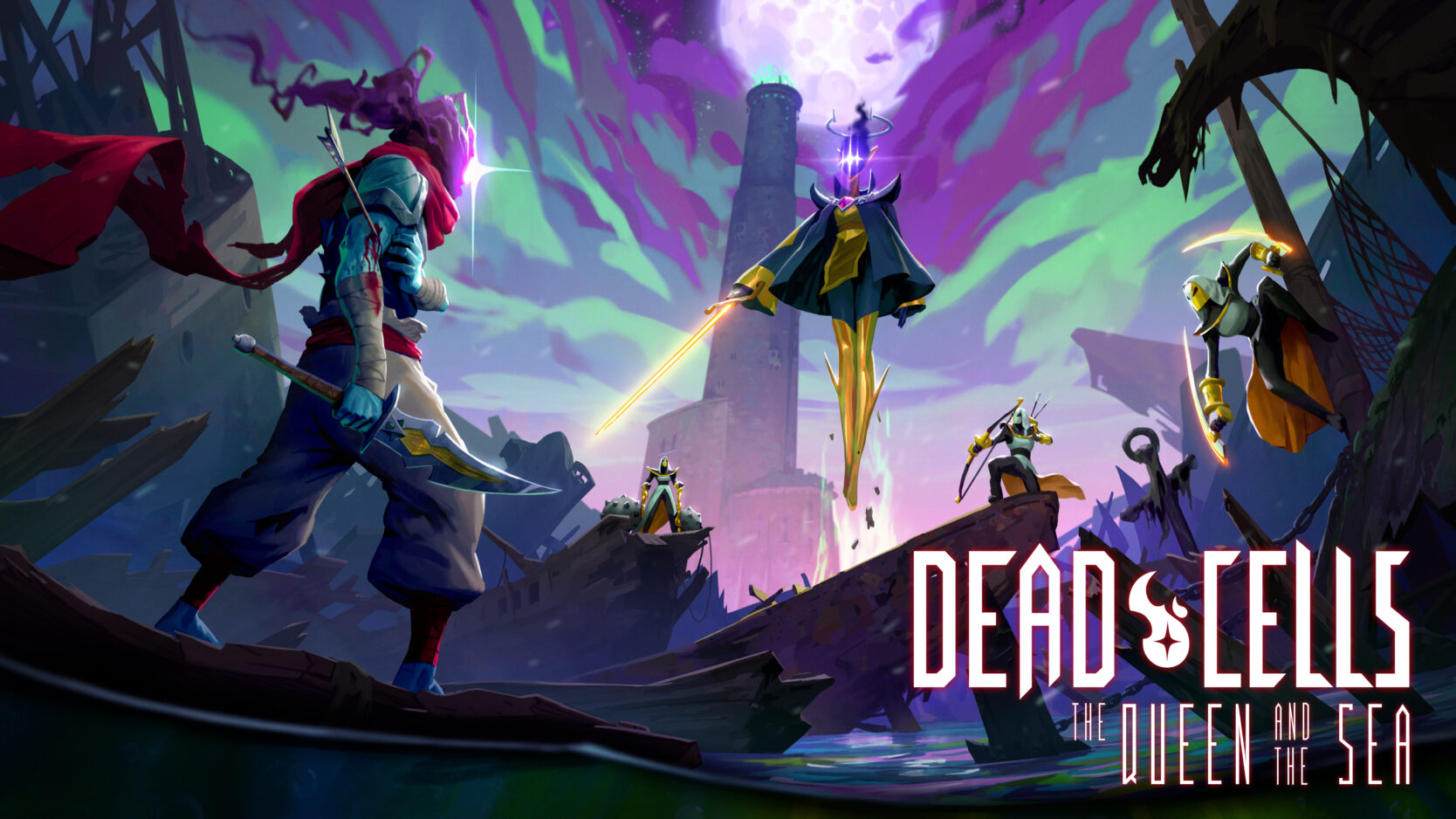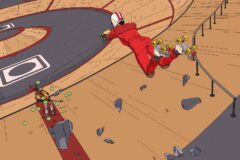When Dead Cells released into early access back in 2017, the action-heavy roguelike immediately began garnering praise for its depth of combat and gameplay.
But what even the most glowing reviews couldn’t have predicted was that as the game enters its fifth year in the public eye, its player base is not only remaining rock solid, but occasionally expanding alongside the game itself. At a time when “games-as-a-service” is practically an expletive, French developer Motion Twin figured out the magic formula for successful DLC releases, adding regular content drops both big and small, paid and unpaid, to satisfy existing players and bring in new ones ever since the game’s release.
The 20-year-old studio actually became so serious about Dead Cells’ downloadable content that they formed a separate studio, Evil Empire, to handle the game’s updates while Motion Twin focuses on its next game (which they’re hoping to announce sometime next year).
With the January 6 release date for Dead Cells’ latest DLC, “The Queen and the Sea,” dropping this morning, SPIN spoke with Evil Empire CEO Steve Filby about the game’s ongoing support and what fans can expect in the future.
SPIN: With so many games either never getting DLC or just getting one expansion and stopping, what do you think it is about Dead Cells that lends itself to so many updates both big and small?
Steve Filby: I remember when we were talking back in the day about doing DLC and the update process, and it was always something that I wanted to do as a strategy to keep the game going while making sure that Motion Twin could obviously pay for the next game and didn’t have to rush it out. We built Evil Empire off the back of that. Our first paid DLC started as a test, because we were kind of terrified. “No, we’re going to get smashed for doing paid DLC.” We always tried to do it fairly by putting out enough free stuff and keeping the game alive by fixing it and working on it even for anyone who didn’t want to pay for the paid content. We hoped that people would recognize that and say “Hey, this is cool. I’ve got a spare five bucks, I’ll support you by buying this bit of DLC.” It turns out, that works really, really well — way better than we expected it to. You see a whole bunch of companies doing DLC, getting really crappy reviews for the DLC, and then generally getting bashed for milking the whole thing too much, so we were always careful about that.
If you look at the base game when we launched it, it was early access, so it was truly not finished. Then even when we did the 1.0 release, we still had more stuff that we wanted to put into the base game, so we ended up doing the “Rise of the Giant” DLC for free, just so that we could finish the base content that we wanted to get out. Now, we’re always looking at it like “What can we add? What can we do differently? What’s this thing that the community’s been talking about for ages that we’ve always hated, but never had the time to fix?” It’s been really great to have that liberty to go back over your own game and say “This thing always bugged us. Let’s fix it.”
How does it feel knowing that people will still come back to Dead Cells to try the new content almost a half-decade after its initial release?
It’s been extremely liberating for all of us in the sense that it gives us so much security to have a game that works like that. We have a fan base that includes people who’ve played since the very first early access version and still come back for big updates. They’ll come back every six months, drop a couple of runs, and be like, “Oh, this is cool” or “Hey, you finally fixed this thing.” It’s been really gratifying. The nice thing about it for us is that we seem to have figured out that happy balance between being able to fix things, change things, and add things for the community — all while still getting some financial support for our work. We’re like “Hey, we do all this work on the game. We feel like that has value. Would you guys mind throwing in?” We haven’t had that backfire on us so far. If it ever gets to the point where the community is done, then we’ll change our strategies as far as how we approach that.
Last month’s “Everyone is Here!” update brought in not just one collaboration, but several fan-favorite indie games. Considering that a lot of games would see that as completely ridiculous, what was it like to expand the Dead Cells universe in that way?
That’s something that we’ve always really enjoyed doing in our games. We love it when we as players find nods or Easter eggs to another game or some pop culture thing, so we filled Dead Cells with little things like that during early access. Like Hollow Knight, for example, there are a couple of portraits of some of the the characters that are just randomly decorating the walls in certain areas. There are a bunch of references to different games that have influenced us and Dead Cells. So then to take that a step further and reach out to someone and say, “Hey, can we integrate it a little bit more deeply into the game?” was a lot of fun. Not all games are suitable for that kind of thing. Hades, for example, would never put other people’s characters in it, because it’s such a strong universe and so heavily built around the narrative. For us, the story was almost an afterthought for the game. We were so heavily gameplay-focused when we were building this that all of these tidbits and extras were just sort of constructed organically. That allows us to do cool stuff like this.
Are you ever surprised at how much people love the game and the culture around Dead Cells?
I’m always surprised to see just how passionate online communities can get about games and artistic creations — whether it’s a movie or a book or whatever. We’re a small team, so we’re directly in contact with the community every day on Discord and Twitter, and we’re talking to people on and on. When I say we, I don’t mean just the marketing and business people. I also mean all of the gameplay programmers, most of the artists, and anyone else who’s interested in being in contact with the community on our side. Everyone is able to get in and just chat and hang around. It’s fun to see all of the theories and watch people figure stuff out about the DLC we’re about to release as they go along. We put little references into some of the free updates as teasers, and they run with these theories. The amount of times that they’ve literally figured out exactly what we’re doing is just outrageous. They know the game — and us — so well that it’s completely ridiculous. These people have seen how the game has evolved, and us evolve with it. We do try to keep boundaries, because we’d like to have our personal lives, but people feel like they know us, and that’s had a really big impact on why we’ve been able to continue doing this.
Can you share anything about what people should expect from Dead Cells after this DLC?
This DLC is going to finish the branch. We see it as a group of three DLCs that are next to each other and create a parallel path that you can take all the way to the end of the game. As for content over and above that, we’ve got heaps of free stuff coming. We’re also going to see what we can figure out in terms of other content that we could add. Not necessarily a new branch — although I wouldn’t rule that out if the community is still keen for more — but maybe different modes for the game and different ways to play. I don’t want to spoil too much, but I know that people reading this are like “Multiplayer!” when that’s probably never going to happen.





